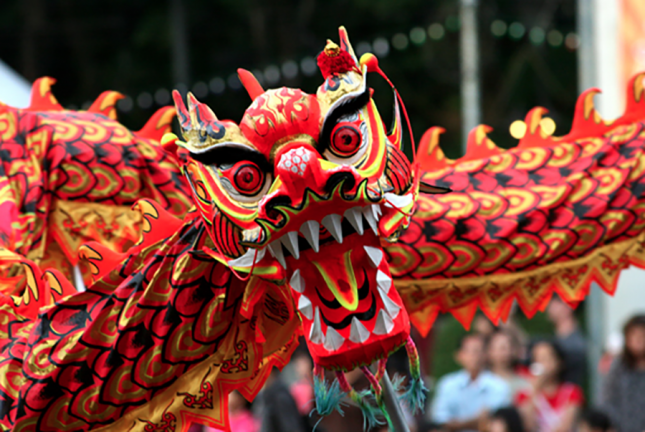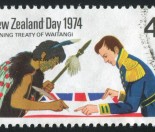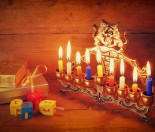The Chinese New Year, or Spring Festival, is an enormous celebration for Chinese people. The New Year celebrations span 15 days from the date of the first full moon in a calendar year, and because it follows the lunar cycle, the New Year date is always changing.
When is the Chinese New Year?
The Chinese New Year, which is celebrated in many parts of New Zealand, usually falls somewhere between 21st January and 20th February each year.
In 2019 the 12 year Chinese zodiac falls on the ear of the Pig. And the Chinese New Year starts from February 5.
The Year of the pig occupies the last (12th) position in the Chinese Zodiac. In the year of the pig we can expect mixed energies although there should be good news on the horizon with world events and hopefully a more calming influence in Middle Eastern countries with huge leaps forward in relationships worldwide.
If your child is born after February 5 this year, according to the Chinese Zodiac calendar, they will be an Earth Pig. Traits of someone born under this sign include:
- carefree
- wonderful personality
- diligent
- compassionate
- generous
- social butterflies
How is the Chinese New Year celebrated?
Just like special days in the Western calendar, the Chinese New Year is celebrated with traditional decorations, food, costumes and rituals. Many of these traditions stem from the Chinese legend about a man-eating beast.
https://www.youtube.com/watch?v=_u-R-aIq3_E
Apparently the beast was sensitive to the colour red and was easily scared by loud noises. As such, explosions, fireworks and red garments became the traditional method of keeping it away. These customs formed the first New Year celebrations, and in traditional Chinese the phrase ‘to celebrate the New Year’, literally means ‘the passing of the nian beast’.
In China, the first 7 days of the New Year celebrations are observed as public holidays, and other countries with large Chinese populations have also put a day or two aside. Chinese people living in western countries usually celebrate the New Year amongst their own Chinese community.
The Lead Up
In the weeks leading up to the New Year, Chinese families give their homes a thorough clean and believe the process sweeps away any bad luck from the previous year. Referred to as the ‘Spring Clean’, decorations are hung throughout the house and doors and window frames are often given a fresh coat of red paint to ward off evil spirits.
In countries with large Chinese populations, New Year markets are set up to sell popular decorations. Plum Trees, which are the Chinese equivalent to a western Christmas tree, are also sold.
Popular decorations include:
- Red diamond shaped banners painted with the Chinese character for ‘auspiciousness’.
- Peach and plum blossoms which symbolise good luck.
- Chrysanthemums which symbolise longevity.
Many Chinese buy new clothes to wear during the festival as this symbolises starting anew in the New Year. Festival clothes are almost always red.
New Year’s Eve
On the eve of the New Year, many Chinese travel home to China to enjoy a reunion dinner with their family. Reunion dinners are usually held in the home of the most senior family member, and involve a huge feast of foods. Some Chinese families set a place for ancestors who have passed away, as a way of acknowledging their presence and showing respect for the foundations they laid in the family.
Just like the Western Christmas, many foods are seen as traditional for the celebration, but over time other dishes have been introduced to the table.
Traditional reunion dinner foods include:
- Chicken and fish.
- Seafood such as prawns and oysters – thought to bring liveliness and happiness.
- Buddha’s Delight – an elaborate vegetarian dish comprising of 18 ingredients.
- Dumplings – which are thought to resemble ancient gold ingots.
- Sunflower, pumpkin or melon seeds.
- Turnip or Taro Cakes.
- Mandarins.
- Lollies – thought to bring the eater a ‘sweet’ year.
Married couples and elderly family members often give ‘red packets’ to younger family at their reunion dinner. The red packets always contain money in even numbers to reflect good luck and honour. Traditionally firecrackers were let off at the stroke of midnight, however many countries have now banned this practice for safety reasons, and instead host public fireworks displays at various times throughout the festival.
First Day of the New Year
The first day of the New Year is for Chinese to welcome ‘the gods of heaven and earth’, and to visit senior members of their family, especially if they were absent from the reunion dinner. Many people avoid eating meat on this day, as they believe abstaining will give them a long and happy life.
Day 2
Traditionally Chinese culture does not allow married daughters to visit their parents regularly throughout the year, however on the second day of the New Year they are given the opportunity to do so.
On this day people also pray to their ancestors, as well as all the gods. Dogs are given extra special treatment, as day 2 of the Spring Festival is recognised as the birthday of all dogs.
Day 3 and 4
Just like we need a break from relatives after Christmas and Boxing days, days 3 and 4 of the Spring Festival are seen as inappropriate days to go visiting. These days are often referred to as “chi kou”, meaning “easy to get into arguments”. People who have had close relatives die in the last 3 years, use day 3 to visit their grave.
Day 5
The fifth day of the New Year is the birthday of the Chinese God of Wealth. Most families stay at home on this day to celebrate.
Day 6-14
From days 6 – 13 people are free to visit friends and family as often as they please. Some, but not all Chinese share in further rituals throughout this time. Some of the ritual celebrations include:
- ‘Renri’ – the common man’s birthday which is celebrated on the 7th day of the festival.
- ‘Midnight Prayers’ – offered to Tian Gong, the God of Heaven, at another reunion dinner on day 8.
- ‘New Year of the Hokkiens’ – prayers and gifts of sugar cane are offered to the Emperor of Heaven on day 9.
Day 15
The end of the New Year celebrations is marked with a Lantern Festival. Lanterns of all shapes and sizes are hung around the streets, market stalls are set up, and performers create a mardi-gras atmosphere. This is the most popular part of the New Year celebrations, especially for communities outside of China.
Most main centres in New Zealand celebrate the Chinese New Year with traditional events or festivals. If you live outside of these areas, ask your local council if there are festivals being held in your region.
For more information on events around New Zealand check out http://chinesenewyear.co.nz/, the New Zealand China Society nzchinasociety.org.nz, or the People’s Republic of China Embassy website www.chinaembassy.org.nz
Happy Chinese New Year!







nice info
no one asked